Sunday 13th to Thursday 17th September
From a distance Tanger (as Tangier is called here) looked like any other modern western city. We entered the old fishing port where, according to our pilot book, there was supposed to be a pontoon reserved for yachts. The pontoons were all crammed full of small boats. We were waved away and directed to go behind a large decommissioned ferry boat, where a young man in denim dungarees, Otman, ran over to help us tie up to a pilot boat. Soon the man from the port authority arrived and we filled in a form. Then a car from the Capitainerie turned up and Hugh was driven off and taken to a customs building on the other side of the harbour where he filled in more forms, they stamped our passports and kept the ships documents. Hugh was left to walk back through the port.
Staying in the fishing port we were right in the middle of things. Fishing boats leaving in the evening and returning early in the morning. The Tarifa Tanger ferry departing regularly from an adjacent quay. A strong smell of rotting fish and something even less pleasant pervades everywhere, the noise of boat engines, gulls, shouting, the water is filthy and boys jump in it to swim, stray cats scrounging for scraps or lounging in the sun (dogs are a rarity). The fish market is right on the harbour; morning and night, fish being packed into boxes of ice, and being sold. Tuna, small shark, sardines, dorado, John Dory etc etc and there are basic fish restaurants where you can eat with the locals… a plate of fried shrimp and a plate of assorted deep fried fish, eaten with your fingers, 100 dirham for two (about £7). There were no other foreign yachts in Tanger apart from us. Not one. They are in the process of building a fabulous new marina which was due for completion by 2010. From the billboards advertising it the new marina will be sleek, clean and modern with luxury yachts and liners berthed and elegant people happily enjoying the salubrious surroundings. From what we saw completion date is far from imminent.
Out on the streets there are people everywhere, the traffic is hectic; crossing the road is a question of launching yourself forward across the zebra crossing and hoping someone slows down, a game between driver and pedestrian.
We had an evening and a full day in Tanger. Time to enjoy the busy, colourful ancient medina and the narrow winding streets within the old city wall, visit the sultan’s palace and gardens in the kasbah, and drink mint tea and eat Moroccan cakes in a rooftop cafe. The American legation, now a museum in a house in the medina, was a calm, cool refuge from the hectic streets and market. The pictures and photographs told of a time when Tangier would have been a more exciting racy place, with drugs and lawlessness, when a mix of European and American writers, artists and entrepreneurs lived there and the likes of Tennessee Williams, Truman Capote and William Burroughs visited.
We looked at some of new Tanger, busy dusty streets of shops and offices like any big city, and walked down the wide sandy beach but didn’t swim as our guide book advised that raw sewage is pumped into the sea here.
The morning we left we had to return to the Police office to have our passports stamped for exit and to recover our ships documents. The official asked where we were going next. I was keen to visit Asilah, 25 miles south down the coast, described in the guidebook as a ‘gem’. He said no, it was not a Port of Entry and our boat was too big.
The sail south, once we’d passed Cap Spartel, the north-westernmost point of Morocco, was relaxing, in sunshine and light winds. We debated whether to stop in Asilah until the last minute, as a post on Noonsite, a website for cruising yachts, told of how a few months ago a visiting yacht had been through the formalities only to be told they must leave. It would be a shame to waste time, and if we did stay then the wind would be worse the next night for the longer sail to Rabat…..
We entered the small harbour at Asilah at 6pm and were beckoned over to the harbour wall and helped to tie up, handing out the obligatory packet of cigarettes as a thank you. We were then told we couldn’t stay there and told to move to the outside of a row of tugs and coral fishing boats, rafted up, with us on the outside. More cigarettes. We climbed over ten boats to get to the harbour and shown to the gendarmerie on the port.
The young gendarme in the harbour office in Asilah was charming and handsome despite his ill-fitting cheap bottle green uniform. He also spoke some English. He seemed fascinated by our documents and passports and gazed intently at them as if they would reveal to him just what to do with us, eventually photocopying them all and getting us to fill in several forms. His boss arrived and it was clear that we were a nuisance but perhaps they didn’t want to tell us to leave so late in the evening. We only wanted two hours on shore to visit their medina and we promised to be gone by 7am the next morning. He explained that since Asilah was not a Port of Entry and our passports had been stamped in Tanger to show us effectively leaving Morocco, if we got off the boat here we were illegal. Then he said something in French which we understood to mean he was going to turn a blind eye. We thanked him profusely and headed into the medina.
The medina inside the 15th century Portuguese walls was like a sanitised version of the medina at Tanger, but with wide streets, whitewashed walls and colourful murals. It is small, clean, relaxing, with mostly Moroccan tourists taking photos of each other. We had supper of tagine at a restaurant on the seafront and headed back to the boat to anxiously watch the depth as low tide approached. It bottomed out at 1.9 meters (our draft is 1.8 meters), we breathed a sigh of relief and went to bed.
We had promised to be gone from Asilah by 7am but when Hugh went to collect our documents from the gendarmerie it was locked up and he had to wake the sleeping policeman. We were happy to leave this early, 3 hours before low tide, and didn’t regret our night in Asilah but with force 4 to 5 winds on our nose it meant a long tack out to sea and back and finally motorsailing hard into the wind. An overnight sail with a sky full of stars, passing the occasional fishing boat, taking turns at sleeping and watching out for other boats. We stay at least 4 miles away from the coast as apparently the tunny nets can stretch out from the shore even this far.
We arrived outside Rabat at 10am and called up the marina (one of only two modern marinas on the west coast of Morocco – I was looking forward to a hot shower). There was a big swell on the sea making entrance into the channel difficult and the port was closed. We were advised to carry on south to Mohammedia, 33 miles further down the coast. Seven hours later we tucked in behind a cargo ship entering the large commercial port of Mohammedia, and waited for the delightfully named ‘Asphalt Summer’ to exit. There was just one space left at the far end of the narrow gap between two crowded pontoons, with anchor lines entering the water. And a strong wind. We tried but got blown onto several boats and tangled with various lines, eventually making an inelegant exit and tying up on the outside of another yacht. From here we can visit Rabat and Casablanca by train.
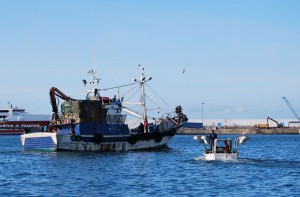
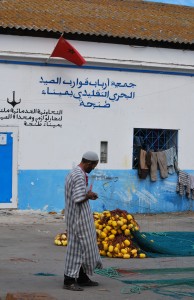
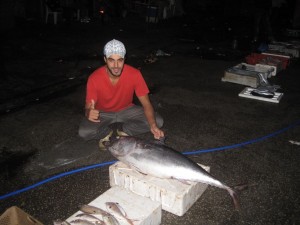
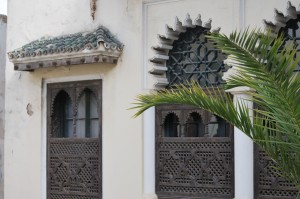
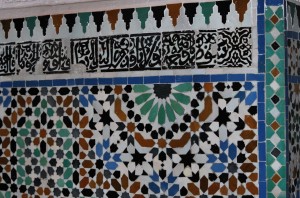
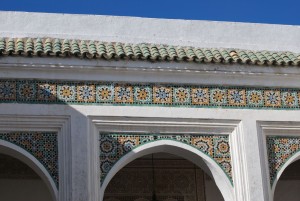
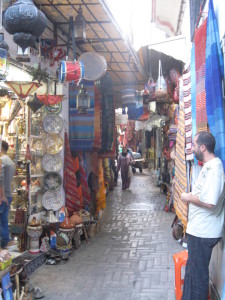
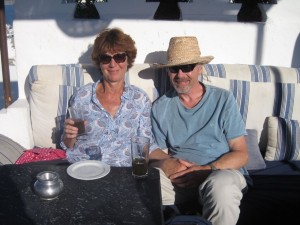
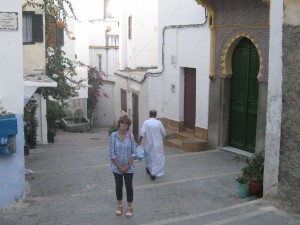
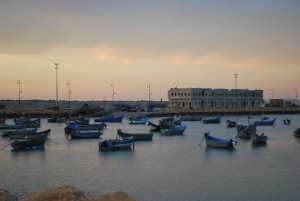
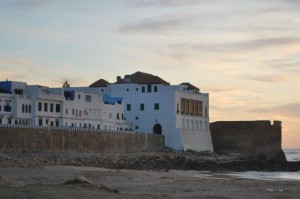
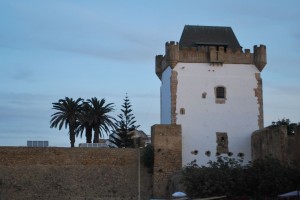
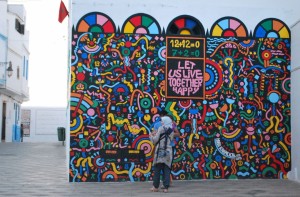
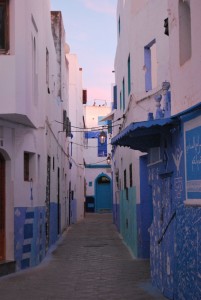
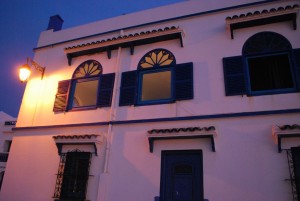
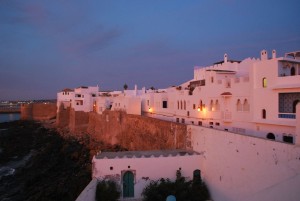
4 Comments
Sue Lucas
September 22, 2015 - 9:34 pmJust wondering whether you have been commissioned by the Tanger tourist board?
annie
September 22, 2015 - 9:43 pmSmelly fishing port? When they eventually finish the new marina then I may be applying for the job 😉 x
Stan
September 23, 2015 - 1:54 pmAsphalt summer ? Sounds like a good road trip to me! Glad to see you are dodging official channels with cigs
annie
September 23, 2015 - 2:39 pmRather than a good sea trip? Whiskey and cigarettes are standard here to help things go more smoothly. Despite our ambivalence about them they seem to work x